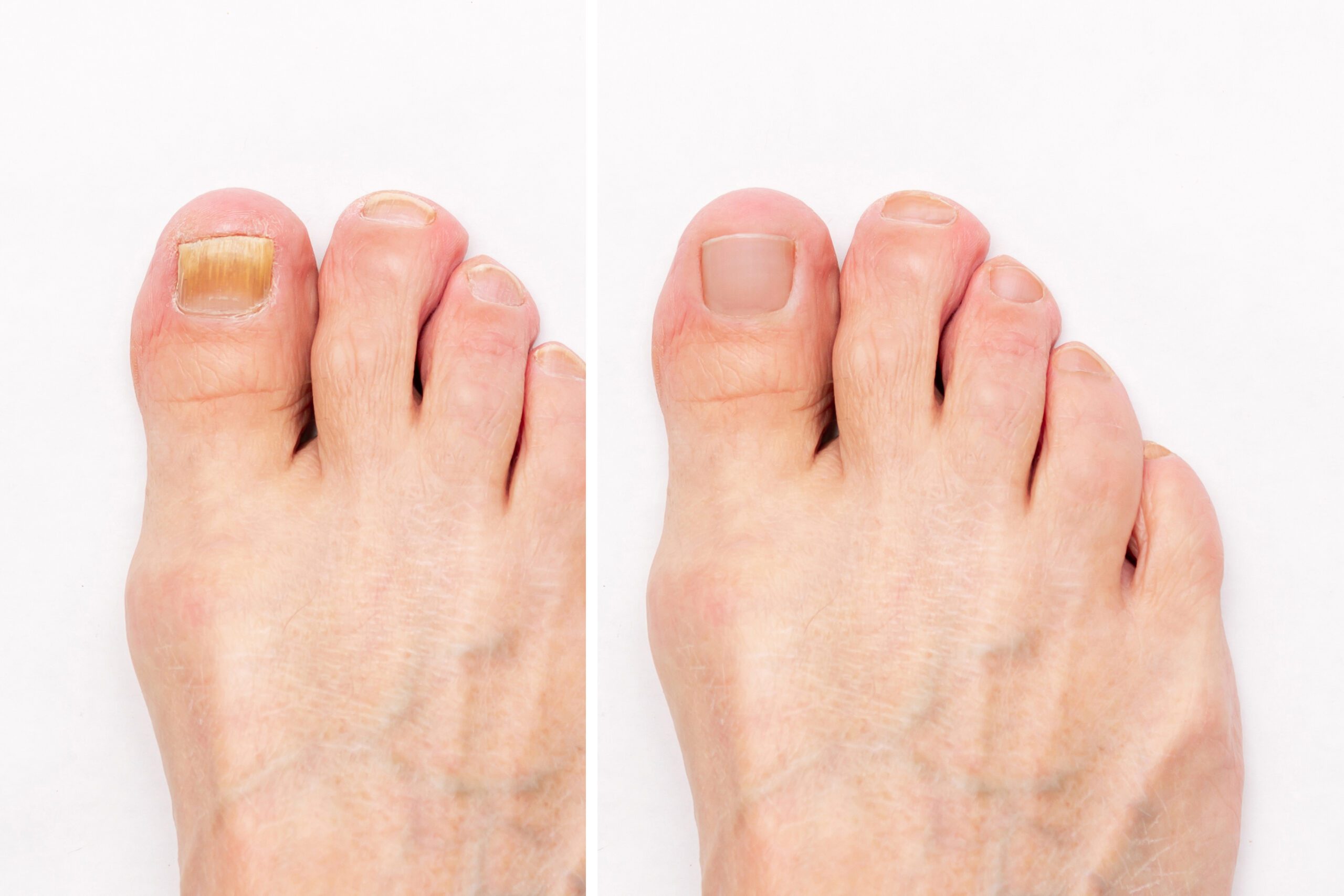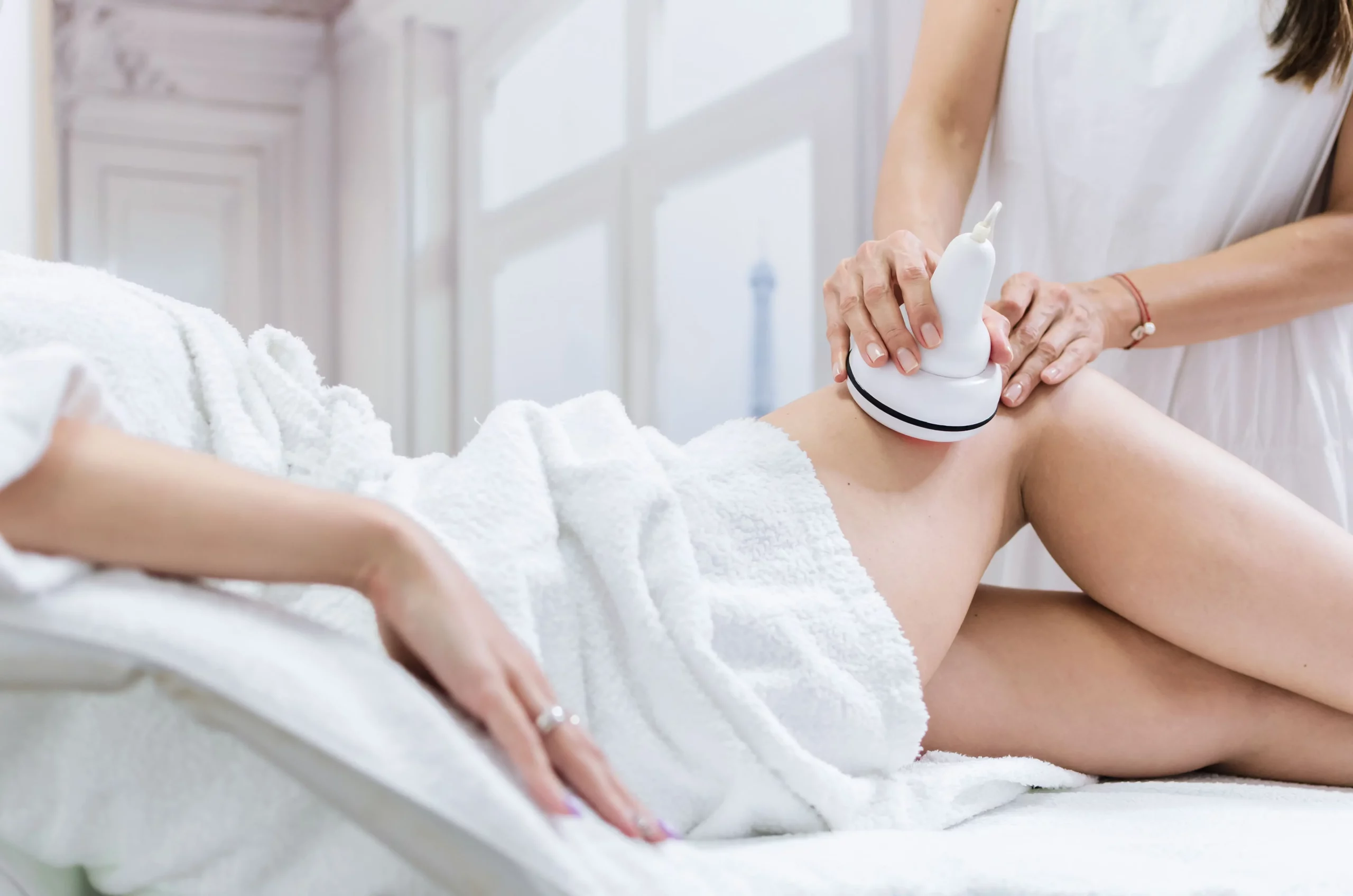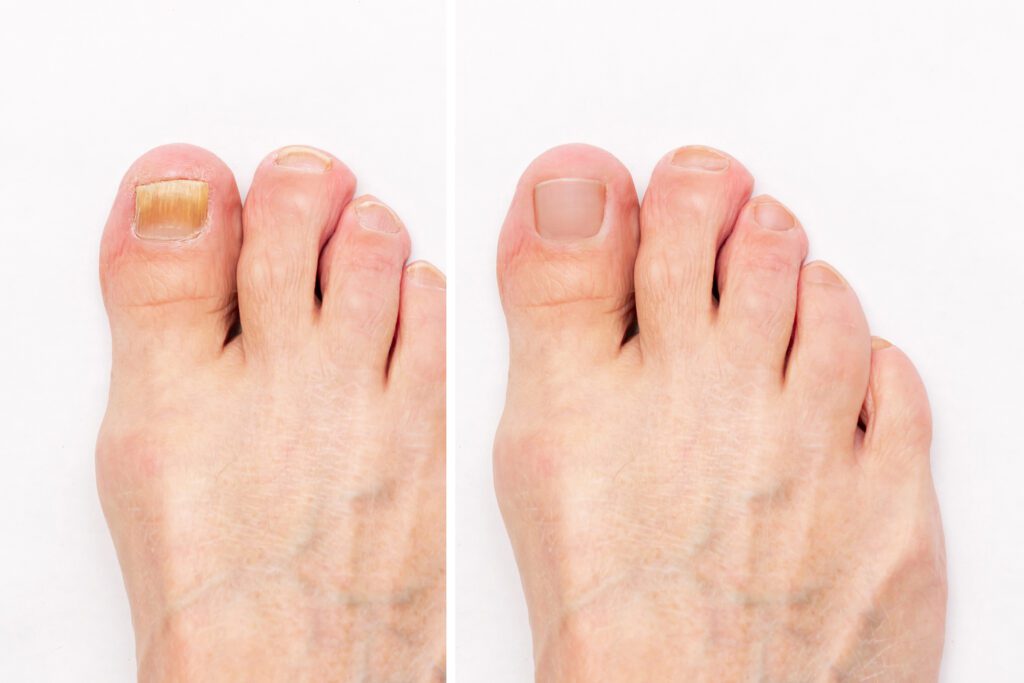The fungal infection is primarily caused by dermatophytes, yeasts, or molds that find their way into the nail bed, often triggered by exposure to warm, moist environments. As the infection progresses, it manifests in various signs, including nail color, texture, and shape changes. While not usually a serious medical concern, nail fungus can lead to discomfort, cosmetic concerns, and, if left untreated, potential complications. Understanding the causes, symptoms, and available solutions is crucial for effectively preventing and managing this common ailment.
What is Nail Fungus?
Onychomycosis, or nail fungus, is a typical fungal infection affecting the toenails or fingernails. It typically starts as a yellow or white spot under the tip of the nail and can cause the nail to become brittle, discolored, or thickened. Proper treatment may involve antifungal medications or other interventions depending on the infection’s severity. If you suspect nail fungus, consulting a healthcare professional is advisable.
How does Nail Fungus affect an individual?
Nail fungus can affect individuals in various ways. Common symptoms include changes in nail color, thickening of the nail, brittleness, and distorted shape. In more worse cases, it may cause pain and discomfort. Beyond the physical aspects, nail fungus can have psychological effects, leading to self-consciousness or embarrassment. If left untreated, the infection can spread and potentially cause complications. Seeking medical advice for proper treatment and diagnosis is important to address these effects and prevent further issues.
What are the common causes of nail fungus?
Common causes of nail fungus include:
- Fungi Exposure: Exposure to dermatophyte fungi, which are common in environments like public showers, swimming pools, and nail salons.
- Moist Environments: Fungi thrive in moist and warm environments, making sweaty or damp shoes and socks a risk factor.
- Nail Injuries: Injuries to the nail or surrounding skin can create openings for fungi to enter and cause an infection.
- Weakened Immune System: Individuals with weakened immune systems are more vulnerable to fungal infections, including nail fungus.
- Poor Foot Hygiene: Inadequate foot hygiene, such as not keeping the feet dry and clean, can contribute to developing nail fungus.
- Age: Nails can become more brittle and dry as people age, increasing the likelihood of fungal infections.
Practicing good foot hygiene, wearing breathable shoes, and promptly treating nail injuries to reduce the risk of nail fungus is essential.
What are the early symptoms of nail fungus?
Early symptoms of nail fungus (onychomycosis) may include:
- White or Yellow Spots: Small white or yellow spots or streaks may appear on the nail.
- Changes in Nail Texture: The affected nail may become thicker or more brittle than usual.
- Discoloration: The nail may develop a yellow, brown, or greenish tint.
- Distorted Nail Shape: Changes in the shape or contour of the nail may occur.
- Slight Odor: In some cases, a mild odor might be associated with the infected nail.
Early intervention can help avoid the infection from spreading and becoming more challenging to treat.
What are some solutions for nail fungus?
Treatment for nail fungus (onychomycosis) can vary depending on the severity of the infection. Some common solutions include:
- Topical Antifungal Medications: Over-the-counter or prescription antifungal nail creams, ointments, or nail lacquers can be applied directly to the affected nails.
- Oral Antifungal Medications: Prescription oral medications may be recommended for more severe cases. These medications work from within to combat the fungal infection.
- Laser Therapy: Laser treatment aims to kill the fungi infecting the nail. It’s a newer option, and its effectiveness is still being studied.
- Surgical Removal: In extreme cases, surgical removal of the infected nail may be considered to allow for the direct application of antifungal medications.
- Improving Foot Hygiene: Keeping the feet clean and dry, wearing breathable socks and shoes, and practicing good foot hygiene can help prevent the recurrence of nail fungus.
Consult a healthcare professional to determine the most suitable treatment for your situation. Successful treatment often requires patience and consistent application of the recommended remedies.
What are some tips for better nail health?
Nail fungus can be uncomfortable to individuals, but there are ways to prevent it from happening in the first place. Let’s understand.
First, proper nail hygiene is necessary. Wash your hands and feet regularly with soap and water. Gently clean under your nails using a soft brush to remove dirt and prevent bacterial or fungal growth. Next, trim your nails carefully. Trim your nails straight across to avoid ingrown nails. Use sharp, clean nail scissors or clippers. Smoothing the edges with a nail file is also best to prevent snags. Another tip is to moisturize nails and cuticles. Regularly apply a lotion or moisturizing cream to your nails and cuticles to prevent brittleness and cracking.
Another way is protecting your nails. Wear gloves when doing household chores or working with harsh chemicals to protect your nails from damage and drying. A healthy diet for nail growth is also a must. Ensure your diet includes a variety of nutrients, especially biotin, vitamins A and C, iron, and zinc, to support healthy nail growth. Staying hydrated can also be helpful, as adequate water helps keep your nails and the skin around them hydrated.
If you’re an avid fan of excessive nail products, limit its use. Avoid using acrylic nails and gel polish excessively, as they can weaken natural nails. Give your nails breaks between applications. Like other aspects of our health, regular nail checks are also essential. Monitor your nails for any changes in color, texture, or shape. Early detection of issues allows for prompt intervention. Additionally, avoid nail biting and picking. Break the nail-biting habit, which can lead to infections and negatively impact nail appearance.
We know how trendy footwear is cool, but if it compromises your foot’s health, then it’s not cool! That’s why choosing proper footwear is needed. Wear shoes that fit well and allow proper air circulation to prevent moisture buildup, reducing the risk of fungal infections. Manicures and pedicures are also fashionable, but be mindful when choosing professional manicures. If you opt for professional nail care, ensure that tools are properly sanitized to prevent the spread of infections.
You can promote and maintain optimal nail health by incorporating these practices into your routine. Get Aerolase Elite YAG Laser at SpaGo Medspa and contact them now for more details.












